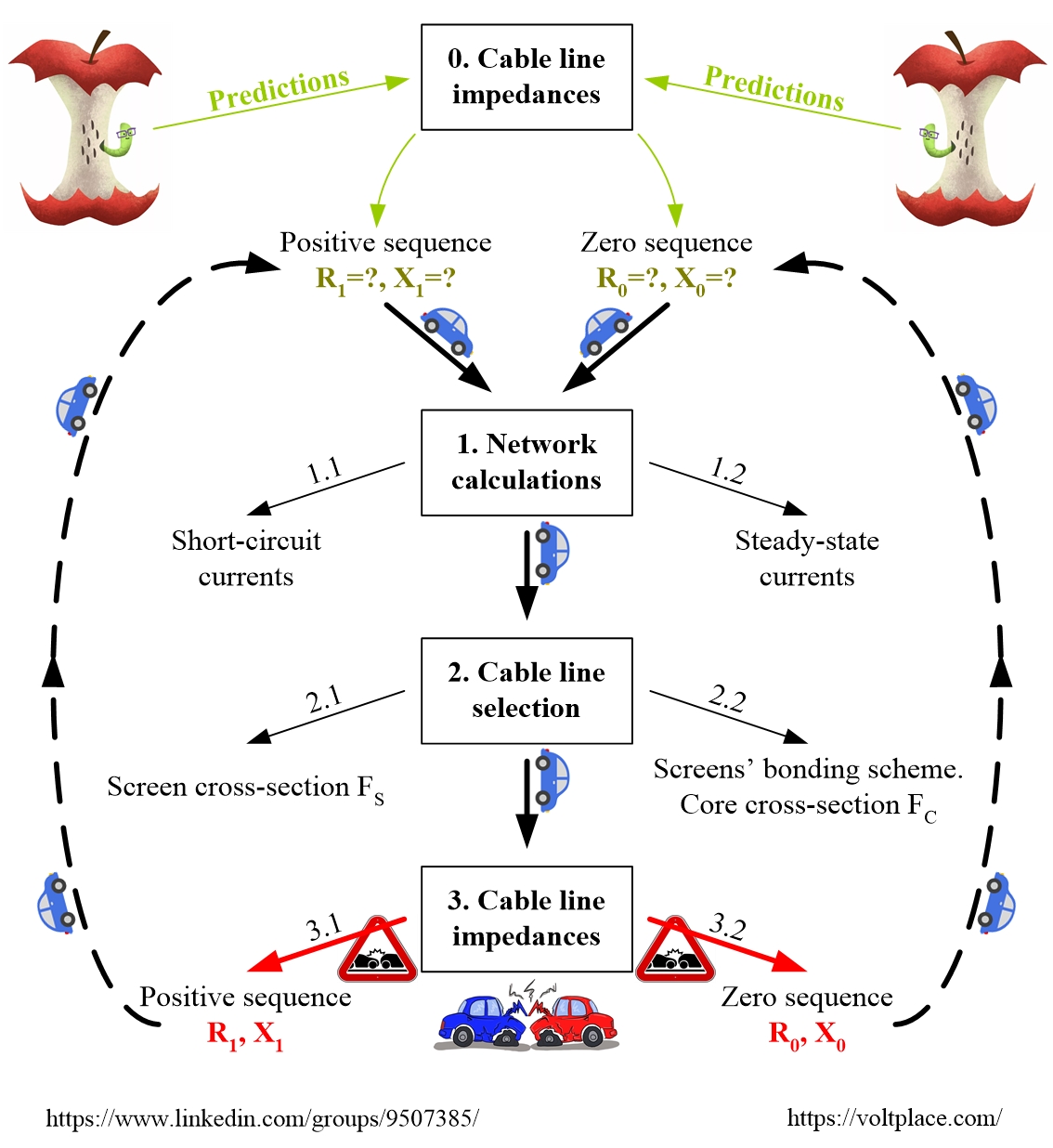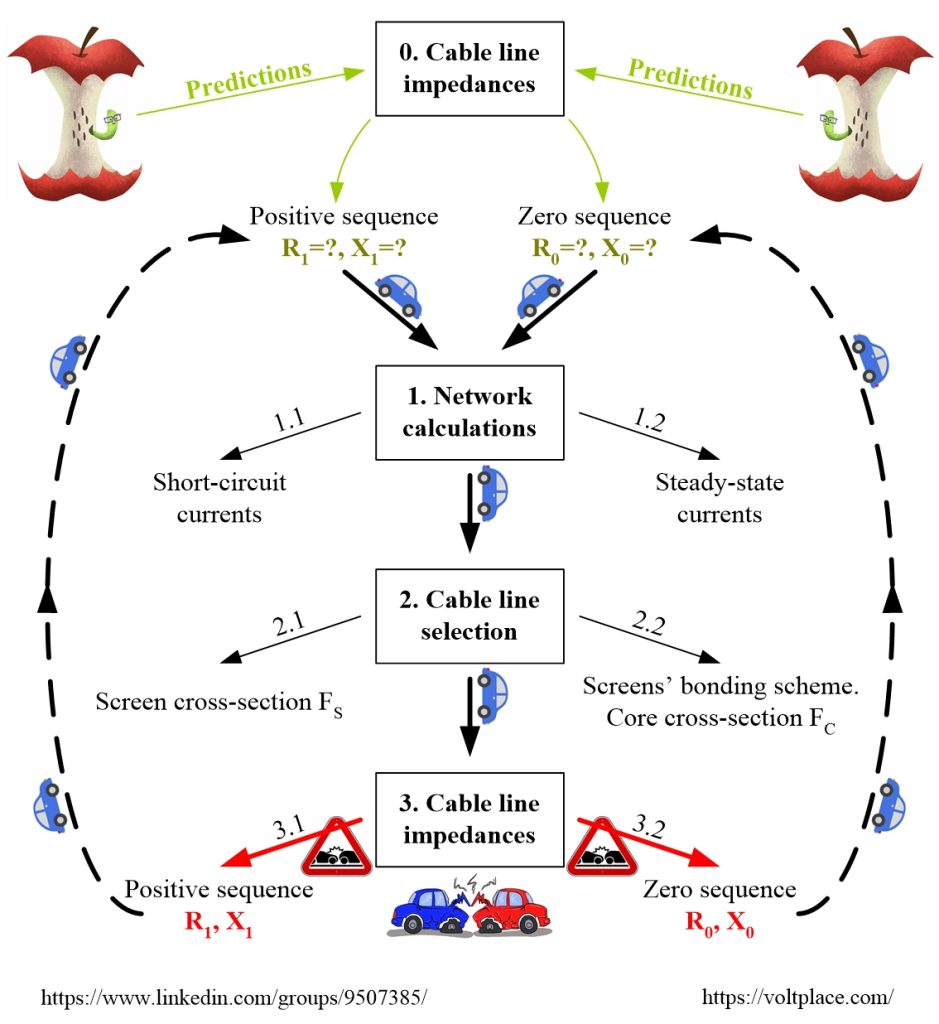
Crazy roundabout
Designing a cable line is an interesting process that resembles moving in a circle. The fact is that in order to select cables, we need the correct values of the short-circuit current (1.1) and the steady-state current (1.2). Such currents can only be calculated using information about the impedances of the cable line (R1, X1, R0, X0). However, at the beginning of the cable design process, we do not have such impedances, because we will only know them at the very end, when we finally choose:
1️⃣ Screen cross-section Fs.
2️⃣ The bonding/grounding scheme of the screens.
3️⃣ Core cross-section Fc.

JOB OF «NETWORK OPERATOR»:
✅ Stage 0. Not yet having accurate information about the features of the cable, he tries to predict its impedances R1, X1, R0, X0. It is often assumed at this stage that R0=R1 and X0=X1, which is a serious mistake.
✅ Stage 1. He set up an electrical network model (using special software) and calculates short-circuit (1.1) and steady-state (1.2). Such calculations are actually rather estimates. Firstly, they are made by using very approximate cable impedances R1, X1, R0, X0. Secondly, sometimes they are made without taking into account the projected cable line at all (for example, at the time of network calculations, no one knew that once there will be a new cable line).
JOB OF «CABLE LINE DESIGNER»:
✅ Stage 2. He takes currents (1.1) and (1.2), on the basis of which he selects the screen cross-section Fs, the screens’ bonding scheme, the core cross-section Fc.
✅ Stage 3. He calculates the impedances of the cable line R1, X1 and R0, X0.
WHAT ELSE NEEDS TO BE DONE:
✅ “Roundabout”. The designer informs the network operator of the exact values of R1, X1, R0, X0. This will make it possible to re-do Stage 1 (update the computer models of the network, clarify the short-circuit and the steady-state currents). This will allow to re-do Stage 2 and make sure that the cable was selected correctly (Fc, Fs, bonding/ grounding).
AND NOW THE COMMENTS:
1️⃣ “Roundabout” in practice, unfortunately, almost no one does. Thus, can we trust the values of short-circuit and steady-state currents that we use for design? We can’t. For example, incorrect cable impedances can change short-circuit currents in a cable network by 35%!
2️⃣ Those who buy expensive software to select a cable (Stage 2) are wasting money, expecting to perform very accurate calculations (<1%) and correctly select the screen and core cross-section. We will never get an accurate result if the data has an accuracy of 35% only.
3️⃣ It is important to correctly calculate impedances of cable lines. Both «network operators» and «cable line designers» should be able to do this. The problem is that well-known cable catalogs and cable software contain wrong formulae.
There is a difficult roundabout, but we want to drive straight
